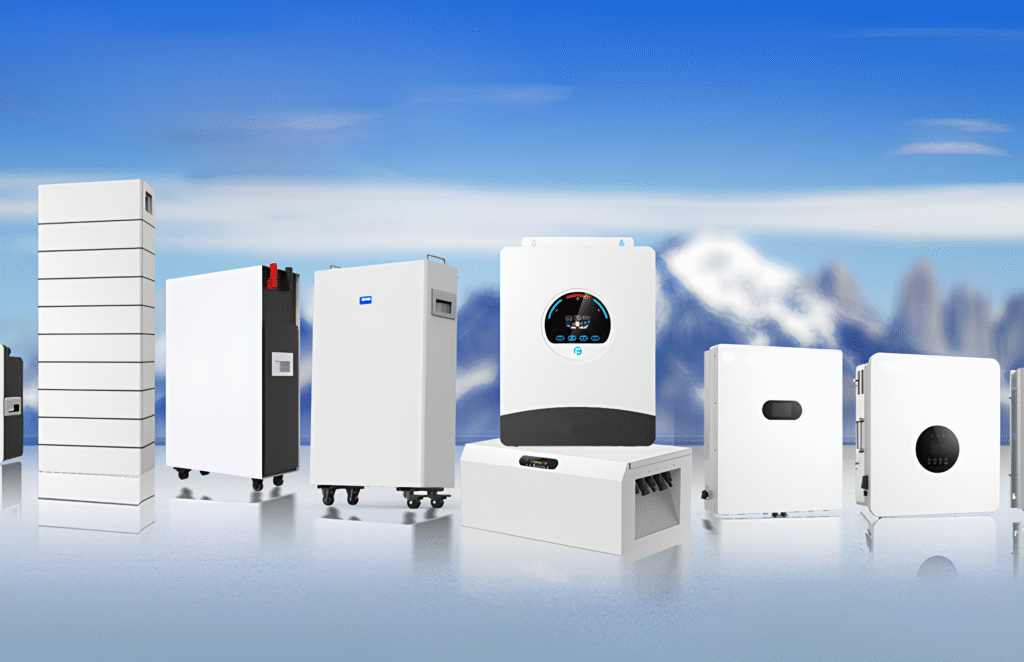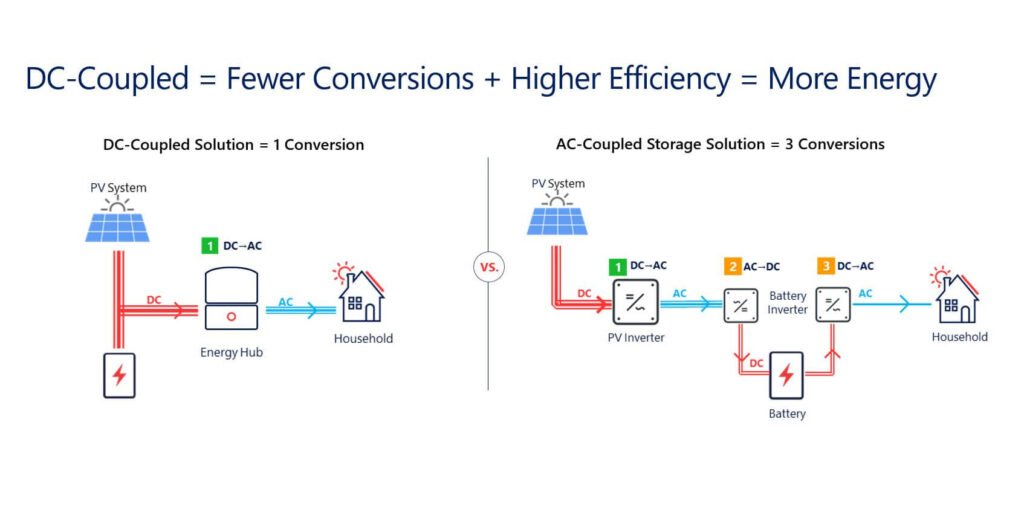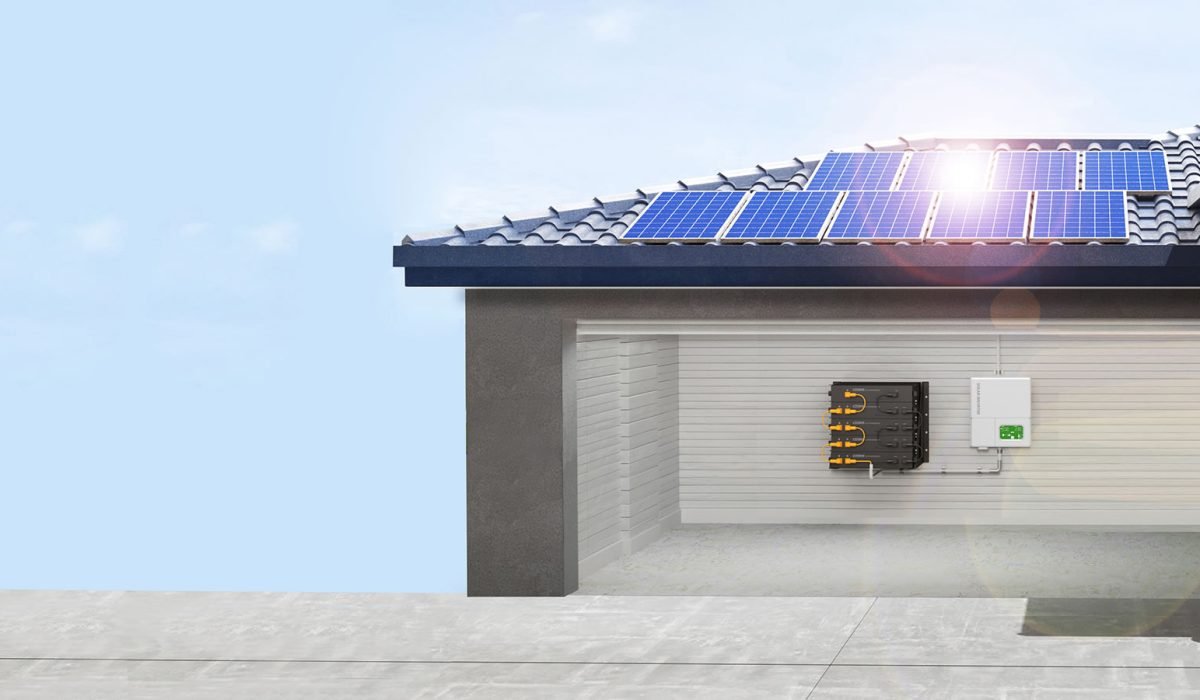If you're considering battery storage for your home in 2025, you're not alone. The global surge in solar adoption, energy price volatility, and increased frequency of blackouts are pushing homeowners to seek smarter, more resilient energy solutions. But how much does a home battery actually cost? How big do you need it? And more importantly—is it worth it?
This 2025 guide answers all your key questions, using real numbers, case comparisons, and first-hand experience from the field.
What Is Home Battery Storage & How It Works
A home battery storage system captures and stores excess energy—typically from solar panels—for use when the sun isn’t shining or during outages.
Here's how the system flows:

PV Panels → Hybrid Inverter → Battery → Home Loads/Grid
- Solar PV generates DC electricity from sunlight.
- The Hybrid Inverter converts and manages both grid and solar inputs.
- Battery Storage holds the excess energy.
- When needed, the system powers your home loads or feeds back to the grid.
This closed-loop not only improves energy independence but also optimizes how and when you consume electricity.
Is a Home Battery Worth It?
Yes—if you’re concerned about blackouts, peak electricity prices, or want long-term savings through subsidies, home battery storage is increasingly justifiable.
Let’s break it down across four major factors:
1. Cost
- Average system costs in 2025 range from $10,000 to $19,000 (installed).
- Payback periods typically span 7 to 12 years, depending on region and energy habits.
2. Power Outages
- In blackout-prone areas (e.g., South Africa, California), battery backup isn't a luxury—it’s a necessity.
- A 13–15 kWh battery can typically run critical loads for 24 hours.
3. Electricity Prices
- Time-of-use tariffs and peak rates make energy arbitrage (charging during low-cost hours, using during peak) a real savings strategy.
4. Incentives
- The U.S. federal tax credit (30% through 2032 per IRS guidelines) can slash upfront costs significantly.
- Similar subsidies exist in Germany, UK, Australia, and select African markets via development grants or donor funding.
Takeaway: Batteries are no longer just a green statement—they’re a financially sound investment under the right conditions.
How to Size a Home Battery (kWh)
Sizing your battery comes down to one simple formula:
Usable Capacity (kWh) = Daily Load × Backup Days ÷ DoD
Where:
- Daily Load = Your average daily electricity usage (in kWh)
- Backup Days = How long you want power without sunlight or grid
- DoD = Depth of Discharge (usually 80–90%)
Example Scenarios:
| Hours of Backup | Daily Load | DoD (90%) | Battery Size (kWh) |
|---|---|---|---|
| 8 hours | 10 kWh | 0.9 | 8.9 kWh |
| 12 hours | 12 kWh | 0.9 | 13.3 kWh |
| 24 hours | 15 kWh | 0.9 | 16.7 kWh |
Most families find that a 13–15 kWh battery covers all "essential loads" during outages.
Source: EnergySage
2025 Costs & Payback
Expect to pay between $10,000 and $19,000 for a complete residential battery installation, including labor, hardware, and permits.
| Component | Estimated Cost (USD) |
|---|---|
| Battery (10–15 kWh) | $6,000–$12,000 |
| Hybrid Inverter | $1,200–$2,500 |
| Installation & Labor | $1,000–$3,000 |
| Permits & Metering | $300–$1,000 |
Factors That Influence Price:
- Grid-tied vs Off-grid setups
- Battery brand and chemistry
- Installation complexity (e.g., wall-mount vs ground)
- Regional labor costs
ROI Tip: Combine battery installation with solar panels to maximize incentives and slash payback to under 8 years.
Reference: This Old House
Incentives & Policies by Region
Government and utility incentives can cut battery costs by 20–50%, depending on your location.
U.S.
- 30% Federal Tax Credit (ITC) applies through 2032.
- Some states offer additional rebates (e.g., California SGIP).
EU & UK
- Grants for battery + solar combos under green retrofit programs.
- VAT reductions in some countries.
Australia
- State-based schemes like South Australia’s Home Battery Scheme offer subsidies up to AUD $3,000.
Middle East & Africa
- Emerging donor-backed initiatives in Kenya, Nigeria, and South Africa support rural battery rollouts.
Key Takeaway: Check local utility and government programs—savings add up fast.
Battery Chemistries: LiFePO4 vs NMC
The two dominant chemistries—LiFePO4 and NMC—offer different advantages.
| Feature | LiFePO4 | NMC |
|---|---|---|
| Lifespan | 4,000–6,000 cycles | 2,000–3,000 cycles |
| Safety | Very high | Moderate (thermal risk) |
| Energy Density | Lower | Higher |
| Cost | Slightly higher upfront | Lower upfront |
| Temp Tolerance | Better for hot climates | Less ideal for Africa |
For hot African and Middle Eastern markets, LiFePO4 wins on safety and longevity.
AC-Coupled vs DC-Coupled with Solar
The way your battery connects to your solar array impacts efficiency, cost, and compatibility.
 |
Feature | AC-Coupled | DC-Coupled |
|---|---|---|---|
| Retrofit-Friendly | ✅ Easy with existing solar | ❌ Requires reconfiguration | |
| Efficiency | ⬇ Lower due to conversions | ⬆ Higher, single conversion | |
| Installation Cost | Higher | Lower (if installing solar too) | |
| Backup Capability | Often limited | Full backup supported |
If you’re starting from scratch—go DC-coupled.
If retrofitting—AC is the easier route.
Brand & System Comparison 2025
| Brand/System | Capacity (kWh) | Power (kW) | UPS Transfer | Warranty (Years) | Expandable |
|---|---|---|---|---|---|
| Tesla Powerwall 3 | 13.5 | 11.5 | <1s | 10 | ✅ |
| SonnenCore+ | 10 | 4.8 | Seamless | 10 | ✅ |
| Enphase IQ | 10.5 | 3.84 | Seamless | 15 | ✅ |
| Bluetti EP900 | 9.9 | 5.0 | <20ms | 10 | ✅ |
| BYD HVM Stack | 15.4 | 6.6 | <20ms | 10 | ✅ |
Sources: EnergySage, Tesla, Sonnen, Bluetti
Installation, Safety & Maintenance
Battery safety isn’t optional—it’s essential.
Key Considerations:
- Fire Safety: Maintain 0.5–1m spacing, avoid direct sunlight.
- Ventilation: Install in well-ventilated, dry areas.
- IP Rating: Minimum IP65 for outdoor units.
- Temperature Control: Critical in Africa's hot zones—prefer systems with active cooling.
- Lightning Protection: Especially in rural/off-grid installs.
- BMS Logs: Monitor performance and preempt failure.
Pro Tip: Schedule annual inspections and keep BMS logs updated.
FAQ: Common Battery Storage Questions
Is a home battery really worth the investment?
Yes, if you face blackouts, peak tariffs, or can claim subsidies.
Can one battery power the whole house?
It depends—a 13–15 kWh battery can run essentials, but whole-home coverage may need 20+ kWh.
Can batteries charge without sunlight?
Yes—you can charge from the grid or generator if configured properly.
How long do home batteries last?
Typically 10–15 years or 3,000–6,000 cycles, depending on chemistry.
Can I save money with night-time tariffs?
Yes—use time-of-use arbitrage to store cheap power and use during peak hours.
How many batteries do I need?
One to two units covers most homes. Off-grid setups may need 3+.
Can I install a battery without solar?
Yes—but your payback may be longer unless you're maximizing on TOU rates or outages.
What’s the difference between Tesla and other brands?
Tesla offers strong backup + sleek integration, but others like BYD or Bluetti often offer modular expansion and lower cost/kWh.
Thinking about adding a battery to your home system in 2025?
Make sure you run the numbers, weigh the chemistry, and tap into all available incentives.
💡 Ready to size your battery and get a quote? Let’s talk about your daily loads and goals—we’ll build your energy independence together.


